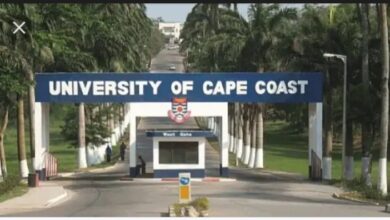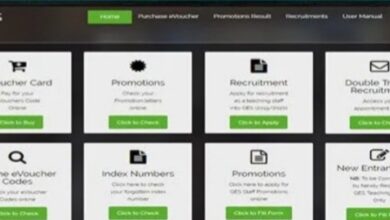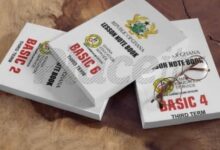Teacher Portfolio Requirements & Guidelines For All Teachers – Summary
Here is the summary of teacher portfolio requirements and guidelines for review and assessment.
From the National Teaching Council, all plans are ready to commence teacher portfolio review and assessment hence all teachers must visit their teacher portal to complete it before the close 1st December, 2022.
Teacher Portfolio Requirements and Guidelines
TEACHING PHILOSOPHY.
Your teaching philosophy is a self-reflective statement of your beliefs about teaching and earning. It is a one to the two page narrative that conveys your core ideas about being an effective teacher in the context of your discipline.
It develops these ideas with specific. concrete examples of what the teacher and Learners will do to achieve those goals. Importantly your teaching philosophy statement also explains why you choose these options.
Guidelines for writing Statements of Teaching Philosophy
Learning Goals
* What got you interested in your discipline ?
*What does your discipline mean to you?
* What do you most hope students will appreciate about your discipline?
* What knowleage, skills and attitudes are important for student success in your discipline?
* How are these disciplinary knowledge, skIlls, and attitodes related to student’s academic, personal, and professional success?
Methods
* What do you see as the relationship between the student and the teacher?
* What do you see are the respective responsibiIties of the student and the teacher?
* How are these relationships and responsibilities reflected in your teaching methods?
* How do these methods contribute to your learning goals for students?
* Why are these teaching methods appropriate for use in your discipline?
* How are your teaching methods attentive to stodent expectations and needs?
How do your personal characteristics and values impact yoor choice and implementation of your teaching methods?
Assessment of student learning:
How do you know your learning goals are being achieved using your teaching methods?
What sorts of learning assessment tools do you use (e-g. tests. papers. portfolios, journals) and why?
What do the learning assessments say about your teaching ?
WHAT TO DO: USE THE GUIDELINES ABOUT AND WRITE YOUR TEACHING PHILOSOPHY.
2. SCHEME OF LEARNING
The scheme of learning/work is usually an interpretation of a specification or syllabus and can be used as a guíde throughout the course to monitor progress against the original plan.
A. Alignments of indtcators to the curricular indicators. (YEARLY SCHEME OF LEARNING)
All stated indicators are aligned wi/th the corricolar Indicators for the grade Level.
B. Alignment of Core Competences to curricular content. (TERMLY SCHEME OF LEARNING)
Though the scheme targets all core competences in the curriculum it highights on both resource and strategies to develop and enhance their use.
WHAT TO DO: YOU ARE TO UPLOAD COPIES OF SCHEME OF LEARNING (A scanned document)
3. EVIDENCE OF TEACHTNG
A. Sample Learner’s Exercises You Have Marked and Graded. Examples of learners work: Exercise. Assignment. Examinatfon. Quizzes
WHAT TO DO: Forty-five(45) samples of learners’ work you have marked and graded. showing your coments. 5 samples per term. You should scan and upload them.
B. Summarised Weekly Monitoring Tool For 3 Years.
WHAT TO DO: You are to summarise your attendance for the 3 years.
You can write and also it must be stamped by your head teacher for evidence sake.
4. LEARNING PLANS
READ ALSO ON
A learning plan is a description of how you intend to achieve your desired outcomes in learning. A learning/lesson plan is a teachers detalled description of the course of instruction. A daily learning/lesson plan is
developed by a teacher to guide class Learning.
WHAT TO DO: You are to attach Fifteen (15) Learning plans of lessons you have taught for each term so making Forty-five (45) for the year. You should scan and upload them.
5. PARTICIPATING IN CO-CURRICULAR ACTIVITIES
NTC sets date to open portal for portfolio assessment and INSET point processing – A must read by all teachers
Co-curricular activities are activities that take place outside of the classroom but are still tied to the classroom curriculum in some way.
Examples of Co-corricolar Activities are Sports. (Music and Dance, Drama, Debate and discussion. Story writing copetition, Essay writing competition, Organisation exhibitions, Celebration of festival, Spelling
Bees.
WHAT TO DO: You are to write a brief report covering at least 2 Co-curricular activities you have taken part in within the term. You can attach pictures to it if any.
6. EVIDENCE OF PARTICIPATION IN SCHOOL BASED ACTIVITIES
1. Evidence of In-Service Training workshop/CPD.
WHAT TO DO: You are to provide evidence on at least five In-Service training workshop/CPD participated (Certificates/ photographs). In- service training/CPD Must be recorded in the teacher training logbook.
2. Report on Core Competencies from the Mentors.
WHAT TO DO: Your mentor is to write a brief report indicating at least five (5) core competences used in your lessons and those that needed support to be used in subsequent lessons.
BELOW ARE ALL THE TEACHER PORTFOLIO REQUIREMENTS AND GUIDELINES FOR BUILDING YOUR PORTFOLIO

















